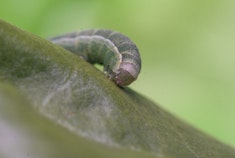 Be Inspired Blog - Arizona
Be Inspired Blog - Arizona
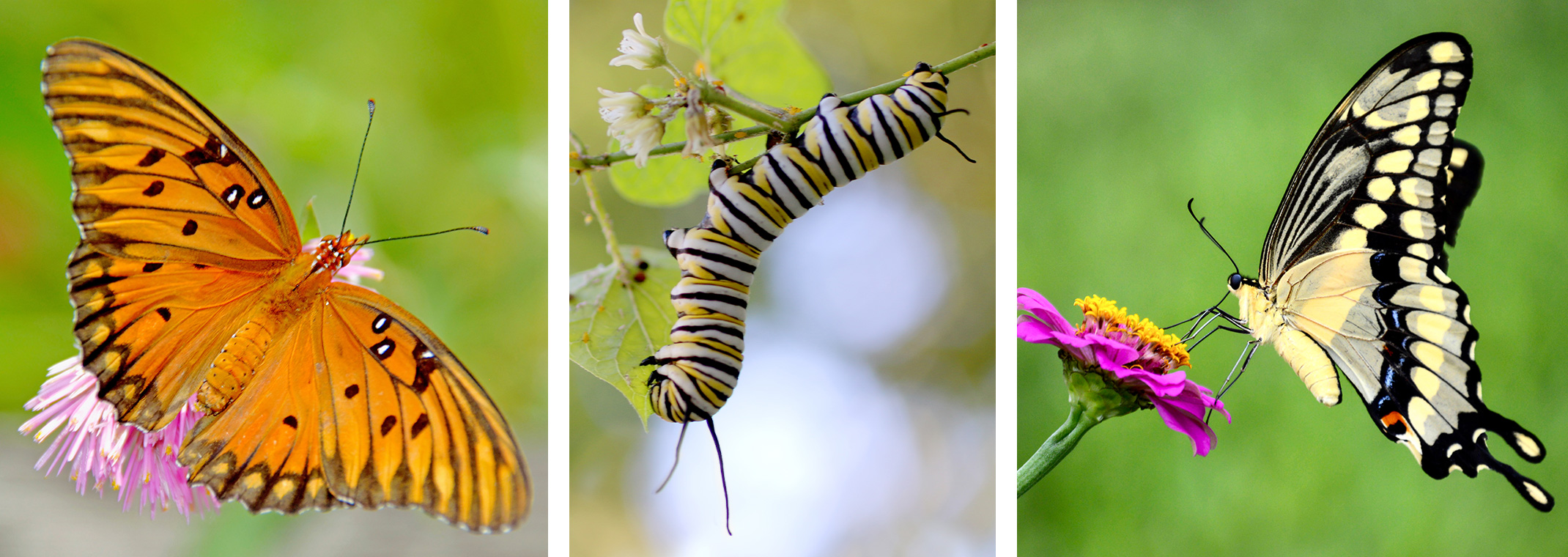
Beneficial or Harmful? How to Identify Garden Caterpillars in the Valley of the Sun
Beneficial or Harmful? How to Identify Garden Caterpillars in the Valley of the Sun
Caterpillars can be both a gardener’s delight and a challenge. In the greater Metro Phoenix area, where warm temperatures encourage year-round plant growth, these little larvae play an important role in the ecosystem. Some caterpillars develop into beautiful, beneficial pollinators, while others can quickly defoliate your prized plants. Knowing which caterpillars to spare and which to remove can help maintain a thriving desert garden.
Butterflies vs. Moths: Which Caterpillars Are in Your Garden?
Caterpillars are the larval stage of both butterflies and moths, but they differ significantly in their impact on plants. Butterfly caterpillars typically have specialized host plants and are essential to pollinator-friendly gardens, while moth caterpillars can be more general feeders and sometimes harmful to garden plants.
Butterfly Caterpillars: The Ones to Keep
Some of the most beloved butterflies in Arizona start as hungry little caterpillars on very specific host plants. Here are a few to recognize and encourage:
Gulf Fritillary
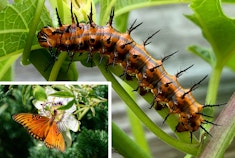
If you grow passionvine (Passiflora spp.), you’ve likely seen the bright orange and black-spiked caterpillars of the Gulf Fritillary (Agraulis vanillae). These voracious eaters may look intimidating, but they only feed on passionvine, ensuring a healthy population of stunning orange butterflies in your yard.
Monarch & Queen Butterflies
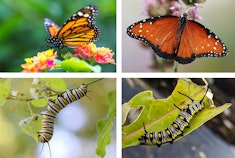
Their caterpillars rely on milkweed (Asclepias spp.) as a host plant. Despite their striped appearance, the Monarch (Danaus plexippus) and the Queen (Danaus gilippus) butterflies are beneficial and should be welcomed into your garden to support declining Monarch populations.
Two-Tailed Swallowtail
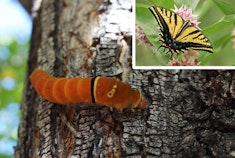
Arizona’s state butterfly, this striking species (Papilio multicaudata) lays its eggs on native ash trees (Fraxinus spp.) and citrus. Their green caterpillars resemble tiny snakes as a defense mechanism. These should be spared, as they transform into large, graceful butterflies.
Giant Swallowtail
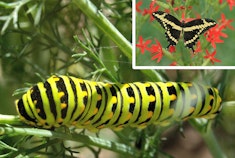
Known as the "Citrus Dogwood worm," this caterpillar (Papilio cresphontes) resembles bird droppings in its early stages and feeds on citrus trees. Although it can consume young leaves, it rarely causes lasting damage, and the resulting butterfly is a stunning addition to any garden.
Moth Caterpillars: The Ones to Watch
While some moth caterpillars serve as food for birds and other wildlife, others can become major garden pests. Here are a few common culprits:
Hornworms (Manduca spp.)
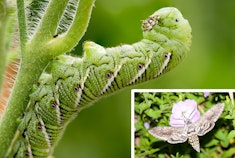
The infamous tomato hornworm, which grows into the five-spotted hawk moth, can decimate tomatoes, peppers, and eggplants. Though impressive in size, they should be removed if they threaten your vegetable harvest.
Cabbage Loopers
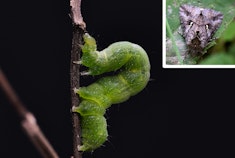
These caterpillars (Trichoplusia ni) feast on leafy greens like lettuce, kale, and cabbage. Their rapid feeding can leave plants skeletonized, making them an unwelcome visitor in vegetable gardens.
Cutworms
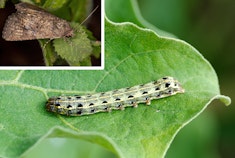
These nocturnal feeders (Noctuidae family) attack young seedlings at the base, cutting them down before they have a chance to grow. If you find plants suddenly toppling, dig around the base to check for cutworms.
Examples of Herb Moth Caterpillars include: Beet Armyworm (Spodoptera exigua) - shown above, Dill Moth (Depressaria pastinacella), Garden Webworm (Achyra rantalis), Mint Root Borer (Fumibotys fumalis), Parsley Worm (Papilio polyxenes, Black Swallowtail Caterpillar), and Tobacco Budworm (Heliothis virescens).
How to Manage Caterpillars in Your Garden
Understanding which caterpillars to keep and which to remove helps maintain a balanced garden. Here are some ways to manage them effectively: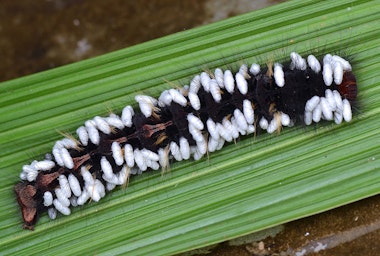
- Encourage natural predators – Birds, lizards, and beneficial insects like parasitic wasps help keep harmful caterpillars in check. Parasitic wasps are tiny, non-stinging insects that lay their eggs on or inside caterpillars. When the wasp larvae hatch, they consume the host from the inside out, effectively controlling pest populations. One common example is the Braconid wasp, which targets tomato hornworms. If you find a hornworm covered in small white cocoons, leave it—these are parasitic wasp pupae that will soon hatch and help manage other caterpillars.
- Remove caterpillars early – Catching them before they grow large prevents excessive plant damage.
- Prune off rolled or webbed leaves – Many caterpillars hide within curled or webbed foliage. Removing these sections of the plant can stop them from spreading.
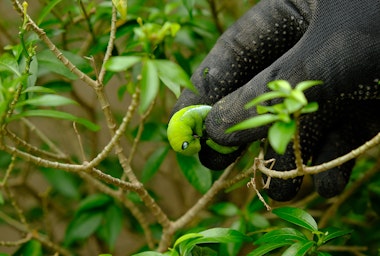
- Handpick and dispose of caterpillars – If caterpillars are causing significant damage, gently remove them by hand. To prevent further infestations, they can be relocated to non-essential plants or, if necessary, crush or place in a container of soapy water for humane disposal.
- Use row covers – Protect vegetable crops from harmful caterpillars by covering them with lightweight fabric.
- Apply BT (Bacillus thuringiensis) to specific plants – This naturally occurring bacteria specifically targets caterpillars while being safe for humans, pets, and beneficial insects like bees.
- Plant strategically – Grow nectar plants like lantana and verbena to attract butterflies while keeping vegetable patches separate from known host plants.
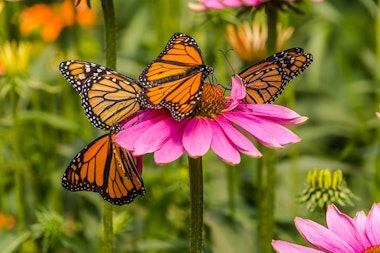
In the Valley of the Sun, caterpillars are a natural part of gardening. By learning to distinguish between beneficial butterfly caterpillars and more harmful moth larvae, you can cultivate a garden that supports local pollinators while protecting your edible and ornamental plants. When in doubt, research before removing a caterpillar—what looks like a pest today may become tomorrow’s beautiful butterfly.
Questions about what’s eating your garden? Ask one of our Trusted Garden Advisors!

